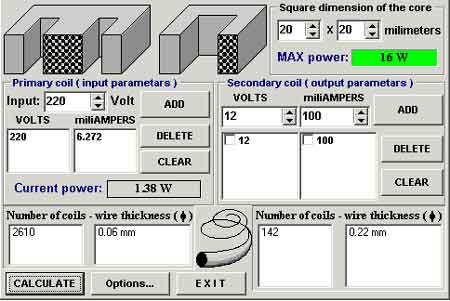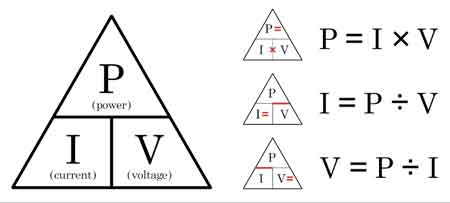Transformer Calculator

Substation Maintenance Training
Our customized live online or in‑person group training can be delivered to your staff at your location.

- Live Online
- 12 hours Instructor-led
- Group Training Available
Download Our OSHA 3075 Fact Sheet – Understanding Electrical Hazards in the Workplace

- Learn the effects of electric current on the human body
- Understand OSHA safety standards and protective devices
- Discover essential lockout/tagout and grounding practices
A transformer calculator determines voltage, current, power, and turns ratio for step-up or step-down systems. It analyzes load capacity, efficiency, and winding needs, ensuring accurate sizing, energy savings, and safe operation in utility applications.
What is a Transformer Calculator?
A transformer calculator is a useful tool designed to help professionals accurately determine the appropriate transformer size and capacity for various applications.
✅ Calculates voltage, current, and power for transformers.
✅ Determines turns ratio for step-up and step-down designs.
✅ Helps improve efficiency and load matching in electrical systems.
When calculating the proper transformer sizing, it is helpful to understand how utility transformers are applied across power distribution networks.
Transformer Calculator – Why It Matters
Choosing the wrong size can cause overheating, inefficiency, or costly failures. A transformer calculator eliminates guesswork by providing accurate voltage, current, and kVA calculations for both single-phase and three-phase systems. This essential tool ensures proper sizing, reduces energy loss, and enhances overall system performance.
Electrical Transformer Maintenance Training
Substation Maintenance Training
Request a Free Training Quotation
A transformer calculator determines voltage, current, power, and turns ratio for step-up or step-down units. It helps analyze efficiency, load capacity, and winding requirements, ensuring accurate design and safe operation of electrical systems across industrial, commercial, and power distribution applications.
By inputting essential details such as voltage, current, and power requirements, this tool simplifies the calculation process, ensuring the correct selection to meet system demands. In this article, we will examine the core functions of this tool and its role in calculating load capacity, efficiency, and performance in both single-phase and three-phase systems.
Practical Example: Calculating kVA for a Step-Down Transformer
Suppose you need to calculate the size that steps down 480V to 120V for a load requiring 40 amps on the secondary side with a power factor of 0.9. Using this calculation:
Electricity Today T&D Magazine Subscribe for FREE

- Timely insights from industry experts
- Practical solutions T&D engineers
- Free access to every issue
Step-by-Step Calculation:
-
Identify the secondary load:
Power (kW) = V × I × PF = 120 × 40 × 0.9 = 4.32 kW. -
Convert to kVA:
kVA = kW ÷ PF = 4.32 ÷ 0.9 = 4.8 kVA. -
Check primary current:
I (primary) = (kVA × 1000) ÷ V (primary) = (4.8 × 1000) ÷ 480 = 10 A. -
Select transformer:
Select a 5 kVA step-down transformer (the next standard size).
How To Calculate the Required Transformer Size
The correct size is critical for ensuring the safe and efficient operation of electrical systems. A calculator evaluates the primary voltage, secondary voltage, and power needs. This process begins by understanding the voltage levels on both the primary and secondary sides of the unit. Once these values are established, the calculator determines the necessary kilovolt-amperes (kVA) to accommodate the system load. Understanding the construction of a transformer helps professionals interpret calculator results in terms of windings, cores, and insulation design.
In a three-phase system, calculations differ slightly and involve additional factors, including the phase relationship and current distribution.
Example Transformer Calculation Table
| Input Parameter | Value | Formula | Result |
|---|---|---|---|
| Secondary Voltage (V2) | 120 V | – | – |
| Secondary Current (I2) | 40 A | – | – |
| Power Factor (PF) | 0.9 | – | – |
| Power (kW) | – | V2 × I2 × PF | 4.32 kW |
| Size (kVA) | – | kW ÷ PF | 4.8 kVA |
| Primary Current (I1) | – | (kVA × 1000) ÷ V1 | 10 A |
What Information Do I Need to Input into a Transformer Calculator?
To use it effectively, several key pieces of information are required:
-
Primary and secondary voltage: The input voltage on the primary side and the desired output on the secondary side.
-
Power requirements: Typically measured in kVA or kilowatts (kW), this helps determine how much energy the transformer will need to handle.
-
Current levels: The calculator needs to assess how much current will carry on both sides.
-
Power factor: This affects the efficiency and size, and must be included for accurate results.
These inputs ensure that the calculations are both accurate and reflective of the system’s actual performance needs. For distribution-level projects, pairing a calculator with knowledge of distribution transformer design ensures safe and cost-effective system planning.
How To Calculate the Transformer Load Capacity
The load capacity refers to the maximum electrical load a transformer can manage without overheating. The transformer calculator calculates load capacity by factoring in the voltage and current on both the primary and secondary sides. If the load exceeds the device's rated capacity, it could lead to overheating and equipment failure.
By using a calculator, the load capacity is determined quickly, and adjustments can be made if the system requires a transformer with a higher or lower capacity. Engineers also use calculators when specifying high voltage transformers, where even small sizing errors can result in significant energy losses.
Three-Phase and Single-Phase System Calculation
Yes, it can handle calculations for both single-phase and three-phase systems. While the principles are similar, the calculations differ slightly depending on the system configuration. In a single-phase system, the process is straightforward, involving the relationship between voltage and current on both the primary and secondary sides.
For three-phase systems, the calculator considers the relationship between the phases and incorporates the necessary adjustments to ensure the transformer can handle the specific load. This makes it a versatile tool for use across different applications, from small residential setups to large industrial operations. A calculator is especially valuable when working with 3 phase transformers, where current and voltage relationships differ from single-phase systems.
How to Account for Efficiency and Losses
Efficiency is a key factor when choosing a transformer, as not all energy is transferred from the primary to the secondary side. Some losses, known as core losses and copper losses, occur due to heat and resistance within the windings. A transformer calculator accounts for these losses by including an efficiency rating, allowing for a more realistic estimate of performance under load conditions. In substations, accurate kVA calculations are crucial for selecting the appropriate electrical substation transformer to meet operational load demands safely.
Sign Up for Electricity Forum’s Utility Transformers Newsletter
Stay informed with our FREE Utility Transformers Newsletter — get the latest news, breakthrough technologies, and expert insights, delivered straight to your inbox.
By factoring in these losses, the calculator enables users to select a unit that not only meets their load requirements but also minimizes energy waste, resulting in cost savings and enhanced overall system efficiency.
It is an essential tool for accurately determining size, load capacity, and efficiency in a wide range of electrical systems. Whether you're dealing with a single-phase or three-phase setup, this tool streamlines the process by taking into account key variables, including primary and secondary voltage, current ratings, and power factor. Additionally, by considering energy losses, the calculator ensures that the selected transformer will operate efficiently and reliably.
Using a calculator enables engineers and technicians to make informed decisions about selecting the right transformer, ensuring optimal performance, safety, and energy efficiency in their electrical systems.
Frequently Asked Questions
How does it calculate?
A transformer calculator estimates kVA, primary and secondary currents, voltages, turns ratios, and efficiencies for step-up and step-down units. It supports single-phase and three-phase systems and factors in the power factor to size equipment correctly.
How do I convert amps to kVA for both single-phase and three-phase systems?
Single-phase: kVA = (V × I) / 1000
Three-phase: kVA = (√3 × V × I) / 1000
Include the power factor (PF) when you start from kW: kVA = kW ÷ PF. This prevents undersizing due to low PF loads.
Does a transformer calculator account for efficiency and losses?
Yes. It can incorporate efficiency, core loss (no-load loss), and copper loss (I²R loss) to estimate real operating performance, heat rise, and expected energy costs over time.
Can it help determine the turns ratio and primary/secondary currents?
Yes. Turns ratio = Vprimary ÷ Vsecondary. Once kVA is known, currents are: Iprimary = (kVA × 1000) ÷ Vprimary and Isecondary = (kVA × 1000) ÷ Vsecondary. This is crucial for specifying conductors, overcurrent protection, and impedance coordination.
What common sizing mistakes does a transformer calculator help avoid?
It helps you avoid ignoring power factor, rounding down kVA to the nearest lower size, forgetting inrush current, neglecting harmonics from VFDs or nonlinear loads, and overlooking short-circuit current and impedance when coordinating protection.
Related Articles










